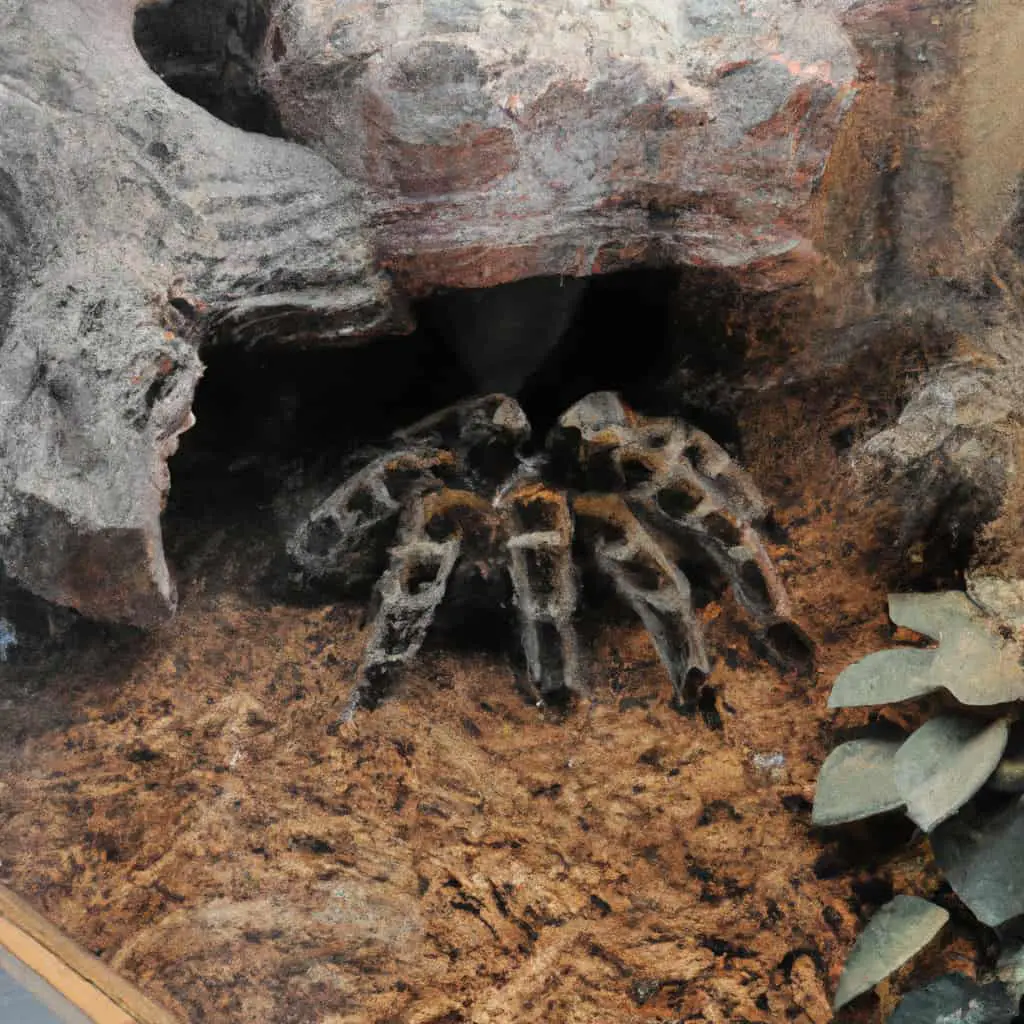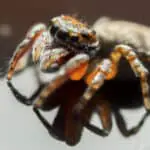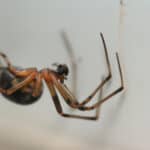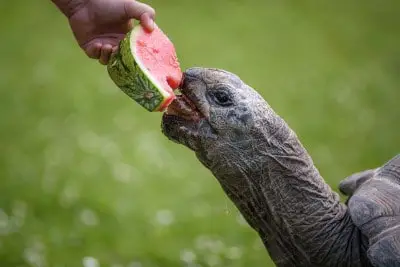As a tarantula owner, you might be wondering what else you can feed your furry friend besides crickets. While crickets are a popular choice, they may not provide all the necessary nutrients for your tarantula’s diet. Fortunately, there are other options available that can provide a varied and nutritious diet for your eight-legged companion.
Understanding Tarantula Diet
Tarantulas are insectivores, which means they primarily eat insects. In the wild, they feed on a variety of prey, including grasshoppers, moths, beetles, and even other spiders. As a pet owner, it’s important to replicate this natural diet as closely as possible to ensure your tarantula stays healthy.
Common Prey for Tarantulas
Aside from crickets, there are several other insects that you can feed your tarantula. Mealworms, superworms, cockroaches, locusts, and earthworms are all good options. Each of these insects has its own pros and cons, so it’s important to choose the right one for your tarantula’s needs.
Key Takeaways
- Tarantulas are insectivores and require a varied diet to stay healthy
- In addition to crickets, mealworms, superworms, cockroaches, locusts, and earthworms are all good options for feeding your tarantula
- It’s important to choose the right prey for your tarantula’s needs and to replicate their natural diet as closely as possible.

Understanding Tarantula Diet
As a tarantula owner, it is important to understand the dietary needs of your pet. Tarantulas are carnivores and primarily feed on insects in the wild. In captivity, crickets are a common food source for tarantulas, but there are other options available.
Tarantulas are insectivores, which means they require a diet high in protein. In the wild, they prey on a variety of insects, including crickets, grasshoppers, and beetles. When feeding your tarantula, it is important to provide a variety of prey to ensure they are receiving all the necessary nutrients.
Digestion is also an important factor to consider when feeding your tarantula. Tarantulas have a unique digestive system that involves external digestion. They inject digestive enzymes into their prey and then suck out the liquefied contents. This process can take several hours, so it is important to avoid disturbing your tarantula during this time.
In addition to protein, tarantulas require minerals and other nutrients to maintain their health. Some insects, such as mealworms, are high in fat and should be fed in moderation. It is important to research the nutritional content of different prey items before feeding them to your tarantula.
Overall, understanding the dietary needs of your tarantula is crucial for their health and wellbeing. By providing a variety of prey items and ensuring they receive all necessary nutrients, you can help your tarantula thrive in captivity.
Common Prey for Tarantulas
As a tarantula owner, it’s important to know what types of prey your tarantula can eat besides crickets. In this section, I will cover some of the most common feeder insects and alternative prey that tarantulas can consume.
Feeder Insects
Here are some of the most common feeder insects that tarantulas can eat:
- Roaches: Dubia roaches, hissing roaches, and Turkestan roaches are all great options. They are high in protein and easy to digest.
- Mealworms and Superworms: These are both great options for larger tarantulas. They are high in fat and protein.
- Cockroaches: Some tarantulas enjoy eating cockroaches. They are high in protein and easy to find.
- Grasshoppers and Locusts: These are great options for larger tarantulas. They are high in protein and easy to digest.
- Waxworms: These are high in fat and protein, making them a great treat for your tarantula.
Alternative Prey
In addition to feeder insects, there are also other types of prey that tarantulas can eat:
- Rodents: Some larger tarantulas can eat small mice as a supplemental food source.
- Frogs: Some tarantulas enjoy eating small frogs.
- Beetles: Some tarantulas enjoy eating beetles as a treat.
- Caterpillars: Some tarantulas enjoy eating caterpillars as a treat.
- Fish Flakes: If you’re in a pinch, you can feed your tarantula tropical fish flakes as a supplemental food source.
It’s important to note that not all tarantulas will eat all types of prey. It’s important to research your specific tarantula species to determine what types of prey they can eat. Additionally, it’s important to ensure that the prey you feed your tarantula is healthy and free from pesticides or other harmful chemicals.
Feeding Tarantulas of Different Sizes
As tarantulas grow, their feeding requirements change. Here are some guidelines on feeding tarantulas of different sizes:
Feeding Spiderlings
Spiderlings are very small and fragile, so they require small prey. Fruit flies, pinhead crickets, and small mealworms are good options. You can also crush the heads of small crickets to make them easier to eat. It’s important not to overfeed spiderlings, as they can easily become obese and die.
Feeding Juveniles
Juvenile tarantulas are larger than spiderlings, but still require smaller prey. Crickets, mealworms, and waxworms are good options. As with spiderlings, it’s important not to overfeed juveniles.
Feeding Adult Tarantulas
Adult tarantulas can eat larger prey, such as adult crickets, roaches, and superworms. Larger species of tarantulas can also eat small lizards, mice, and frogs. However, it’s important to avoid feeding any vertebrate prey too often due to ethical reasons.
When feeding adult tarantulas, it’s important to consider the size of the prey. The prey should be no larger than the tarantula’s abdomen. Overfeeding can lead to obesity and other health problems.
In general, it’s important to research the feeding requirements of your specific species of tarantula. Some species have specific dietary requirements, and may require different prey items or feeding schedules.
Feeding Schedule and Techniques
How Often to Feed
When it comes to feeding your tarantula, it is important to consider their appetite and life stage. Young tarantulas, like slings and juveniles, are growing rapidly and require more frequent meals than adults. Offering food every 4-7 days for young spiders and 7-10 days for adults is a good rule of thumb. However, it is important to monitor your tarantula’s weight and adjust the feeding schedule accordingly. Overfeeding can lead to obesity and health issues.
How to Feed
There are a few techniques for feeding your tarantula. Some prefer to use tongs to dangle live prey in front of their tarantula, while others prefer to place the prey on the ground and allow the tarantula to hunt. It is important to avoid using your fingers to handle the prey, as this can result in injury to both you and your tarantula.
When using tongs, it is important to avoid touching your tarantula with the tongs. Instead, gently dangle the prey in front of your tarantula and allow them to grab it themselves. It is important to use caution when using this technique, as vibrations from the tongs can be stressful for your tarantula.
If you prefer to place the prey on the ground, make sure to provide a hiding spot for your tarantula to retreat to after they have finished eating. This will help reduce stress and prevent your tarantula from feeling exposed.
Overall, it is important to monitor your tarantula during feeding and adjust the feeding schedule and technique as necessary. By providing a balanced diet and a stress-free feeding environment, you can help ensure the health and happiness of your tarantula.
Tarantula Habitat and Feeding
As a tarantula owner, it is essential to provide your pet with a suitable habitat and a balanced diet. Here are some tips on how to create the perfect environment for your tarantula and feed it properly.
Cage and Habitat
First, let’s talk about the cage and habitat. Tarantulas need a spacious and secure enclosure that allows them to move around freely. A glass aquarium or plastic tub with a secure lid is an excellent choice for a tarantula habitat. Make sure the enclosure has enough ventilation holes to keep the air flowing and prevent humidity buildup.
Tarantulas also need a substrate that retains moisture and allows them to burrow. Coconut fiber, vermiculite, or peat moss are all excellent choices. Add some hiding spots, such as cork bark or flower pots, to give your tarantula a place to retreat and feel safe.
Humidity and Webbing
Tarantulas are sensitive to humidity, and the level of moisture in their environment can affect their health and behavior. Depending on the species, tarantulas require different levels of humidity, so make sure to research your pet’s needs and adjust the humidity accordingly.
Some tarantulas are avid web spinners and need plenty of space to create their webs. If your tarantula is a web spinner, provide it with enough substrate and vertical spaces to build its web.
Feeding
Now, let’s talk about feeding. While crickets are a popular choice, tarantulas can eat a variety of insects and even small vertebrates. Mealworms, superworms, cockroaches, locusts, and earthworms are all excellent alternatives to crickets.
When feeding your tarantula, make sure the prey is appropriately sized. A good rule of thumb is to feed your tarantula prey that is no bigger than its leg span. Also, avoid feeding your tarantula wild-caught insects, as they may carry diseases or pesticides.
In conclusion, providing your tarantula with a suitable habitat and a balanced diet is crucial for its health and well-being. By following these tips, you can create a safe and comfortable environment for your pet and ensure it receives proper nutrition.
Special Considerations when Feeding Tarantulas
Feeding During Molting
When a tarantula is molting, it is important to avoid feeding them. During this time, they are vulnerable and can be easily injured or even die if they are disturbed. It is best to wait until the tarantula has fully molted before feeding them again.
Hydration and Feeding
Tarantulas need access to fresh water at all times. A shallow dish of fresh water should be provided, and it should be changed daily. It is also important to ensure that the tarantula is properly hydrated before feeding them. A dehydrated tarantula may not be interested in food and could become sick.
Safety Measures
When feeding a tarantula, safety measures should be taken to avoid bites. Tarantulas have fangs that can deliver a painful and potentially dangerous bite. It is important to use long tongs or forceps to feed them, and to avoid handling them directly. Additionally, it is important to avoid feeding tarantulas prey that has been exposed to pesticides or chemicals, as this can be harmful to the tarantula.
It is also important to avoid over-feeding or underfeeding a tarantula. Overfeeding can lead to obesity and health problems, while underfeeding can cause the tarantula to become weak and more susceptible to disease and parasites.
In summary, when feeding a tarantula, it is important to consider their molting process, hydration needs, and safety measures. By following these guidelines and providing a balanced diet, you can help ensure the health and well-being of your tarantula.
Frequently Asked Questions
What are some alternative food options for tarantulas?
If you’re looking to switch up your tarantula’s diet away from crickets, there are several other options that you can try. Some of the other insects that you can feed your tarantula include mealworms, superworms, cockroaches, locusts, and earthworms. You can also try feeding your tarantula waxworms as an occasional treat.
Can tarantulas eat other insects besides crickets?
Yes, tarantulas can eat a variety of insects besides crickets. Depending on the species of tarantula, live grasshoppers, katydids, moths, houseflies, or cockroaches might also provide a welcome meal.
What is the nutritional value of different tarantula food options?
Different insects have varying nutritional values, so it’s important to provide your tarantula with a varied diet. For example, crickets are high in protein but low in fat, while waxworms are high in fat but low in protein. Mealworms are a good source of protein and fat, while superworms are high in protein and calcium.
Are there any foods that tarantulas should not eat?
Avoid feeding your tarantula anything that is toxic or may cause harm. For example, avoid feeding your tarantula insects that have been exposed to pesticides or other chemicals. Also, avoid feeding your tarantula any insects that are larger than its body size, as this can cause digestive problems.
How often should I feed my tarantula and what quantity?
The frequency and quantity of feeding will depend on the species of tarantula and its age. In general, adult tarantulas can be fed once or twice a week, while younger tarantulas may require more frequent feedings. It’s important not to overfeed your tarantula, as this can lead to obesity and other health problems.
Can I create a balanced diet for my tarantula using multiple food sources?
Yes, you can create a balanced diet for your tarantula by providing a variety of different insects. This can help ensure that your tarantula is getting all of the nutrients it needs to stay healthy. Just be sure to provide a variety of insects that are appropriate for your tarantula’s size and species.








